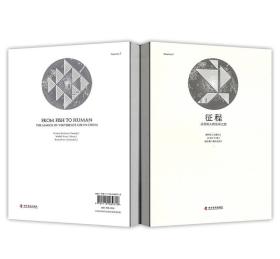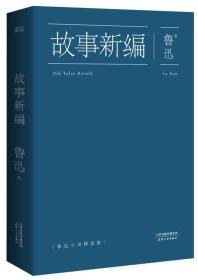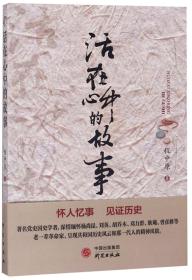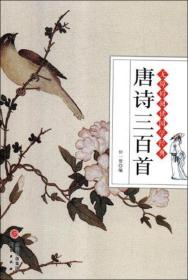
征程:从鱼到人的生命之旅
¥ 66.5 2.6折 ¥ 258 全新
库存11件
河北保定
认证卖家担保交易快速发货售后保障
作者[加]舒柯文、王原、[澳]楚步澜 著
出版社科学普及出版社
出版时间2015-07
版次1
装帧精装
货号9787110089378
上书时间2024-11-15
- 最新上架
商品详情
- 品相描述:全新
图书标准信息
- 作者 [加]舒柯文、王原、[澳]楚步澜 著
- 出版社 科学普及出版社
- 出版时间 2015-07
- 版次 1
- ISBN 9787110089378
- 定价 258.00元
- 装帧 精装
- 开本 32开
- 纸张 胶版纸
- 页数 576页
- 字数 450千字
- 正文语种 简体中文,英语
- 原版书名 From Fish To Human: The March Of Vertebrate Life In China
- 【内容简介】
-
《征程:从鱼到人的生命之旅》
这是一部由三位来自不同国度的古生物学家还原与重建的中国古脊椎动物演化的历史,不仅回答了“我们从哪里来”,还让我们看到生命演化历程中充满的惊奇、偶然与不可思议。作者把这纵横5亿年的历史讲得生动有趣,恢弘而不失其细节,充满了形象的比喻和深刻的思考。本书特别聚焦了“从鱼到人”演化中的九个精彩转折,也值得读者悉心地品味。
这段史诗般的历程藉由15个有代表性的中国古生物群以及数万块珍贵的化石为凭证。一些我国特有的绽放着几亿年生命之美的高清晰化石图片和结构复原图系首次精心呈现,引领化石爱好者踏上远古生命的探秘之旅。同时,认知生命演化历程中的这些记录,正是古生物学的魅力所在。
Recommendation Abstract of
From Fish to Human—the March of Vertebrate Life in China
This is a history of vertebrate life in China reconstructed by three palaeontologists from three different countries, which not only answers the classic philosophic question: “where did we come from”, but also opens a window to the amazed, incidental and unimaginable world of the evolution of life. The authors narrate the 500 million year history in such a vivid and interesting way, spectacular but no loss of detail, while abounded with elaborate metaphors and deep reflections. The special focus of the book, the “Nine Key Transitions” in the evolution from fish to human, also deserves the readers’ scrutinization.
In this book, the historical march of vertebrate life in China is exampled by fifteen representative faunas which were based upon several hundred thousand fossil specimens as solid evidence. Some high resolution photos and structural reconstructions of fossils are presented for the first time, showing the typical Chinese beauty of life in the past hundred million years, and leading the fossil lovers into the exploration of prehistoric life. In the meanwhile, these evolutionary records of the march of life are also part of the charm of palaeontology.
- 【作者简介】
-
舒柯文,加拿大维多利亚大学本科毕业,多伦多大学获得硕士,美国哈佛大学的博士毕业生。现为中国科学院古脊椎动物与古人类研究所副研究员,兼任学术刊物《古脊椎动物学报》的英文编辑。经常在中国和他的故乡加拿大进行野外古生物考察。不忙野外的时候会在研究所做恐龙和其他中生代脊椎动物的研究,或者努力学习汉语。这本书是他对古生物科普的首次主要尝试。
Corwin Sullivan is an associate research professor of the Institute of Vertebrate Paleontology and Paleoanthropology, Chinese Academy of Sciences. He completed his undergraduate education at the University of Victoria, Canada before going on to earn an MSc degree at the University of Toronto at Mississauga and a PhD at Harvard University. He is the English editor of Vertebrata PalAsiatica, the Institute’s peer-reviewed scientific journal. When not busy with fieldwork in China or his native Canada, he pursues research focussing on dinosaurs and other Mesozoic vertebrates at the Institute, and studing Chinese hard in leisure time. From Fish to Human: the March of Vertebrate Life in China is his first major science outreach effort.
王原,本科毕业于北京大学地质系古生物及地层专业,曾赴美留学获文学硕士,在中国科学院获得博士学位。现为中国科学院古脊椎动物与古人类研究所研究员,曾获中国国家自然科学奖和中国科学院杰出科技成就奖。发现和采集了很多重要的脊椎动物化石,喜欢研究化石青蛙和化石蝾螈。他倾尽心力担任的中国古动物馆馆长一职,决定了他还是讲述中国恐龙故事的高手。
Wang Yuan graduated from the Geology Department of Peking University and received his second MS degree in the US and his PhD from the Chinese Academy of Sciences. He is now a research professor of the Institute of Vertebrate Paleontology and Paleoanthropology, CAS, and serves as director of the Paleozoological Museum of China. He has been awarded China’s National Prize for Natural Sciences and the Outstanding Science and Technology Achievement Prize of the Chinese Academy of Sciences. He has discovered and collected many important vertebrate fossils, and loves to study fossil frogs and salamanders. As the diligent director of a palaeontological museum in China, he also excels at telling the stories of Chinese dinosaurs.
楚步澜(Brian Choo),生于新加坡,少年移居澳大利亚,本科毕业于默多克大学,在澳大利亚国立大学获得博士学位,后在中国科学院古脊椎动物与古人类研究所做博士后研究(2009-2013),现就职于澳大利亚弗林德斯大学。他的主要研究方向是志留纪和泥盆纪的化石鱼类,偶尔也发表一些中生代海洋爬行动物的论文。他还是位自学成才的画家,曾为学术论文、科普文章、博物馆展览、图书、电视纪录片等绘制古代生命的科学复原图。
Brian Choo, currently at Flinders University, was born in Singapore but moved to Australia at a young age. He graduated from Murdoch University and received his PhD at the Australian National University before going on to work as a postdoctoral researcher at the Institute of Vertebrate Paleontology and Paleoanthropology, Chinese Academy of Sciences, from 2009 to 2013. His research has focused primarily on fossil fishes from the Silurian and Devonian Periods, but he has also published occasional papers on Mesozoic marine reptiles. As a self-taught illustrator, he has provided scientifically rigorous life-reconstructions of fossil animals for academic papers, popular articles, museum exhibits, books and television documentaries.
- 【目录】
-
Introduction
前言
Just as archaeologists can piece together much of the history of the Shang from the material evidence of oracle bones and bronze cauldrons, palaeontologists can use fossils to reconstruct the far longer and more outlandish history of life on Earth.
正如考古学家能够从发掘出的甲骨和青铜器中拼凑出商代的历史概貌,古生物学家也能够用化石信息重建更加遥远和奇异的地球生命史。
Before we Begin: Vertebrates, Deep Time and Fossils
从这里开始:脊椎动物、地史时期和化石
Skeletons that remain largely intact are rare and precious gifts from deep time to humanity.
那些基本完整无损的骨骼十分稀少,它们也是大自然的“深时”送给人类的珍贵礼物。
Part One Palaeozoic
Cold Blood and Scales
第一篇 古生代
冷血与鳞片的时代
第1章 The Chengjiang Biota: Dawn of the Vertebrates
澄江生物群:脊椎动物的出现
The forces of biological competition and predation, environmental change, and simple chance winnowed the field of early animal life, eliminating some creatures and thereby creating ecological space in which others could flourish.
生物竞争和捕食的力量、自然环境的改变,以及单纯的机遇在早期动物的生命中进行筛选,剔除了某些动物,也因此为其他动物的繁盛提供了生态空间。
[Key Transition 1: The Beginnings of the Backbone] 大事件1:脊梁骨的起源
What emerges clearly from the fossil record and the anatomy of modern hagfish, lampreys and sharks is that the evolution of vertebrae was not a sudden event.
化石记录以及现生盲鳗、七鳃鳗和鲨鱼的解剖结构明确地告诉我们,脊椎的演化显然不是一个突然的过程。
第2章 The Xiaoxiang Fauna: Fishing for Answers
潇湘动物群:“钓出”真正的答案
As greatly modified lobe-finned fish, we humans stroll about on our pelvic fins and use our pectoral fins to turn the pages of books like the one you are reading now.
我们人类其实就是一种“超级改进版“的肉鳍鱼,我们用“腹鳍”四处行走,并用“胸鳍”翻动书的书页,就像你现在正在做的这样。
[Key Transition 2: To Jaw-Jaw is Always Better] 大事件2 :有颌的感觉真好
Vertebrates of different types use their jaws to crush the throats of prey animals, slice and grind their way through tough vegetation, and filter plankton out of seawater.
不同的脊椎动物用不同的方式使用它们的颌,有些用来咬破猎物的喉咙,有些切碎研磨植物,又或者从海水中过滤藻类。
第3章 The Zhongning Fauna: A New Breed of Vertebrate
中宁动物群:脊椎动物的新类型
Amid these remains of fierce predators and heavily armoured prey, a single jaw fragment measuring less than 10 cm in length and retaining only small denticles rather than true teeth might seem unremarkable.
就在这些凶猛的捕食者和重装甲的猎物的残骸之间,一段不起眼的颌骨化石隐匿其中。
[Key Transition 3: Fish Nearly Out of Water] 大事件3:即将离开水的鱼
The somewhat ironic upshot is that the first tetrapod limbs were probably used more for swimming than for walking.
值得玩味的是,最早的四足动物的四肢很可能更多地用于游泳而不是行走。
第4章 The Dashankou Fauna: Beasts and Belebey
大山口动物群:兽与蜥的世界
A particularly interesting beast from the Dashankou Fauna is the carnivore Raranimus dashankouensis, whose name means literally the “rare spirit from Dashankou”.
大山口动物群有一种有趣的动物叫大山口珍稀兽,直译就是“珍稀的大山口精灵”。
[Key Transition 4: The Egg, not the Chicken] 大事件4:先有鸡还是先有蛋
Next time you buy amniotic eggs in a supermarket, why not take a moment to appreciate the sophistication and adaptive value of the intricate biological structures that will soon be appearing on your dinner table?
下一次你在超市购买羊膜动物的卵时,在它们变成你的盘中餐前,何不花一点时间欣赏一下这一充满进化意义的,复杂而精巧的生物学结构呢?
Part Two Mesozoic
The Empire of Dinosaurs
第二篇 中生代
恐龙的帝国
第5章 The Guanling Biota: Life Among the Dangling Crinoids
关岭生物群:与摇曳的海百合伴生的生命
Complete crinoids are among the most spectacular of all invertebrate fossils, looking for all the world like flowers in some garden tended by undersea giants.
完整的海百合化石绝对属于现有无脊椎动物化石中最壮观的一景,它们看起来就好像由海底巨人精心照料的花园中的花朵一般。
[Key Transition 5: Back to the Sea] 大事件5:重返海洋
Ichthyosaurs, with their dorsal and caudal fins, went further in resculpting their bodies to suit the demands of the sea than perhaps any other amniotes except cetaceans.
鱼龙甚至长出了背鳍和尾鳍,这种为了适应海洋生活所做的身体改变,可能比除了鲸类以外的任何羊膜动物都走得更远。
第6章 The Lufeng Fauna: China’s Oldest Dinosaurs
禄丰动物群:中国最古老的恐龙
A single partial lower jaw represents perhaps the greatest mystery of the Lufeng Fauna.
禄丰动物群最大的谜团可能来自一件下颌骨化石。
[Key Transition 6: The Stealthy Rise of Mammals] 大事件6::哺乳动物的悄然兴起
For nearly the first hundred million years of their history, mammals were inconspicuous, mainly insectivorous animals no larger than about one metre in body length, and for the most part much smaller.
在最初一亿年的演化历史中,哺乳动物毫不起眼,主要是食虫性的,身体长度不超过一米,而且在多数时间中其体长远远小于这个长度。
第7章 The Dashanpu Dinosaur Fauna: Giants on the Earth
沙溪庙动物群:地球上的巨龙
By Shaximiao times the dinosaurs had assumed pride of place in the march of vertebrate life, towering over other terrestrial carnivores and herbivores.
在沙溪庙动物群的时代,恐龙已经在脊椎动物的“大游行”中占据了首要的地位,远超过其他陆生的肉食和素食动物。
第8章 The Daohugou Biota: Preserved in their Finery
道虎沟生物群:地层中的华丽霓裳
A few decades ago, palaeontologists believed that almost all Mesozoic mammaliaforms were small, land-dwelling insectivores, and species from the Daohugou Biota have helped to temper that substantially correct but excessively broad generalisation.
几十年前,古生物学者们还在坚信几乎所有中生代的哺乳形动物都是小型、陆生、食虫的动物,但道虎沟的物种有助于调和这一虽然大体正确,但适用度被夸大了的归纳性结论。
[Key Transition 7: Into the Skies] 大事件7:飞上蓝天
By the time pterosaurs went extinct at the end of the Cretaceous, birds had already joined them as denizens of the Mesozoic skies.
当翼龙在白垩纪末灭绝时,鸟类已经成为中生代天空中的姣客。
第9章 The Jehol Biota: Feathered Dinosaurs!
热河生物群:带羽毛的恐龙!
The feathers are long enough to suggest that Yutyrannus would have been rather shaggy, a murderous fuzzball stalking the forests of the Early Cretaceous.
羽王龙很像一个外表蓬松的凶残杀手,鬼鬼祟祟地游荡在白垩纪早期的森林里。
[Key Transition 8: A Profusion of Urv?gel] 大事件8:美羽不怕多
Exactly how old feathers are, in evolutionary terms, is a matter of profound uncertainty.
从演化的角度观察,“羽毛的具体产生时间”是个很难回答的问题。
第10章 The Wangshi Fauna: A Vast Dinosaurian Necropolis
王氏动物群:巨大的恐龙墓场
Shandong is an appropriate setting for a rich trove of bones from a late chapter in the history of one of the greatest dynasties of all, that of the Mesozoic dinosaurs.
由此可见,这里作为中生代恐龙帝国余辉篇章的化石产地,的确十分合适。
Part Three Cenozoic
The Triumph of Mammals
第三篇 新生代
哺乳动物的大捷
第11章 The Qianshan Fauna: Life After the Apocalypse
潜山动物群:劫难后的新生
If niches in an ecosystem are like jobs in an economy, then mass extinctions create vacancies that are automatically filled by the first suitable candidates to step forward.
如果把生态系统中的生态位比做经济领域中的职场职位,那么生物大灭绝所创造的空位会自然而然地被那些最早适应的“求职者”所填补。
第12章 The Shara Murun Fauna: Hooves, Horns and Rams
沙拉木伦动物群:各种各样的蹄子和角
What Granger thought of lending his name to a large, and quite possibly aggressive and ill-tempered, Eocene herbivore is uncertain.
至于格兰杰博士对把他的姓氏授予这种巨型、好斗、脾气暴躁的始新世食草动物是什么心情,我们就不得而知了。
第13章 The Shanwang Biota: Almost Like Today
山旺生物群:往昔如今
Most of the major groups of vertebrates that dominate our modern world were already thriving in the Miocene, whereas the brontotheres and many other characteristic denizens of earlier Cenozoic epochs had long since succumbed to extinction.
现今统治地球的大多数脊椎动物的主要类群,在中新世时已经十分繁盛,而雷兽和其他诸多新生代早期的居民们则早已灭绝。
第14章 The Hezheng Biota: Horses, Hogs and Hyenas
和政生物群:马、猪和鬣狗们
However, the story of horses also exemplifies the baroque complexity of evolution, in that considerable diversification took place at every stage of the slow canter from Eocene horses to Equus.
马类演化的故事是典型的巴洛克风格——的确非常复杂:从只会慢跑的始新世马类到健步如飞的真马类,演化过程中的各个阶段都伴随着显著的多样性分异。
第15章 The Zhoukoudian Fauna: The First Beijingers
周口店古人类遗址:最早的“北京人”
The hyenas could easily have killed occasional Peking Folk or seized the bodies of individuals who had died of other causes, devouring them in the fissure and leaving only fragments of shattered bone.
鬣狗会很容易杀死偶遇的北京人,或把因其他原因死去的北京人尸体带回裂隙,大快朵颐,然后留下满地的碎骨。
[Key Transition 9: Ecce Homo] 大事件9:人类的黎明
In recent decades it has become clear from a variety of evidence, but above all from genetics, that humans are especially closely related to the African apes known as chimpanzees.
最近几十年越来越多的证据,特别是遗传学证据清晰地显示,人类与非洲的现生猿类——黑猩猩的亲缘关系特别近。
Concluding Thoughts: the March Continues, Under Fire
结语:演化在“枪林弹雨中”继续
A strong case can be made that a sixth mass extinction is unfolding in our modern world, as a result of human activity.
可以很有理由地说,由于人类的活动,我们现在的地球正在经历第六次大灭绝。
Afterword 后记
Further reading 延展阅读
Appendix 1: Locations of Major Vertebrate Fossil Sites in China
点击展开
点击收起
相关推荐
— 没有更多了 —



















以下为对购买帮助不大的评价